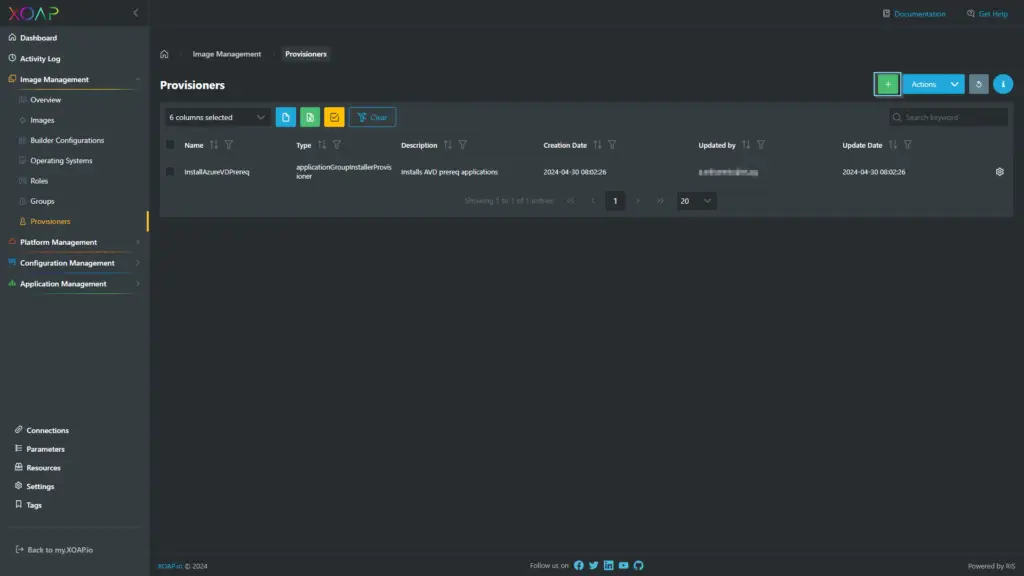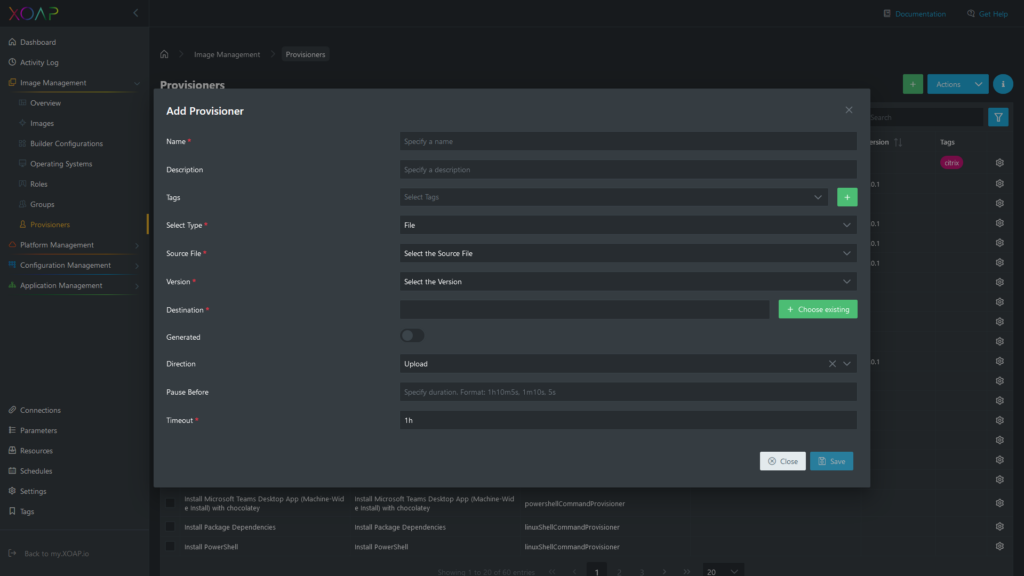Provisioners use built-in and third-party software to install and configure the machine image after booting. Provisioners prepare the system for use, so common use cases for provisioners include:
- Installing applications
- Configuring operating system components
- Creating users
- Downloading application code

Table view #
Provisioners table view shows the following columns:
- Name: The name of the provisioner.
- Type: The type of the provisioner.
- Description: The description of the provisioner.
- Creation Date and Update Date: The date when provisioner has been created and updated.
- Updated by: Shows username of the last person who updated provisioners.
Add provisioners #
Create a new provisioner by clicking on +.

You can select the Provisioner Type.

The currently Available Provisioners are:
- PowerShell Command
- PowerShell Script
- Linux Shell Command
- Linux Shell Script
- File
- Windows Update
- Windows Restart
- DSC Local Configuration
- DSC Pullserver Configuration
- Application Group Installer
- Application Role Installer
The provisioners have different fields that need to be specified depending on the use case und functionality.